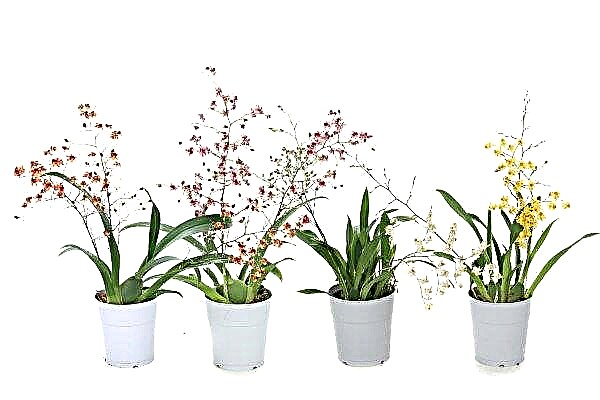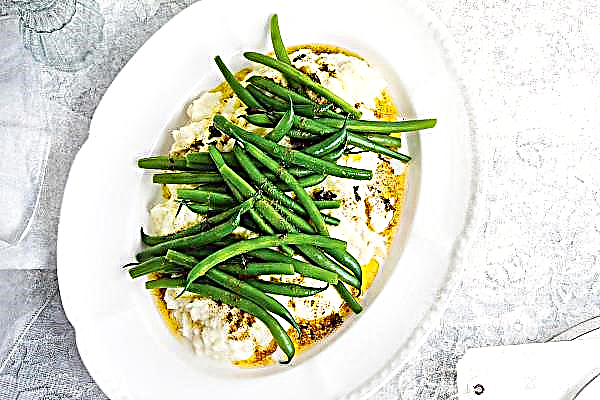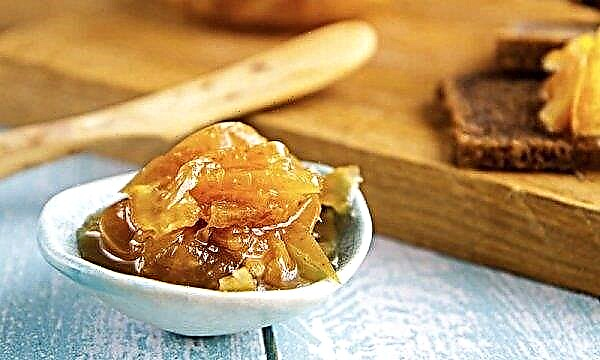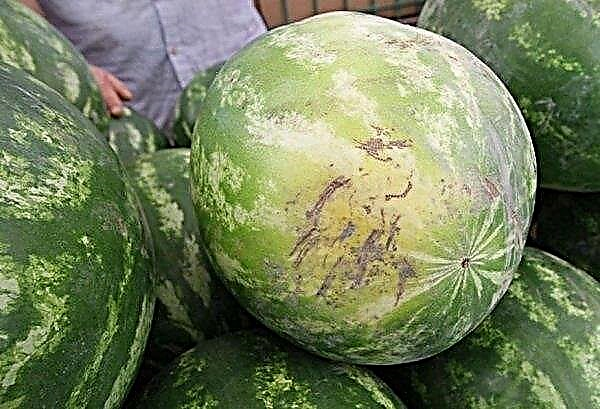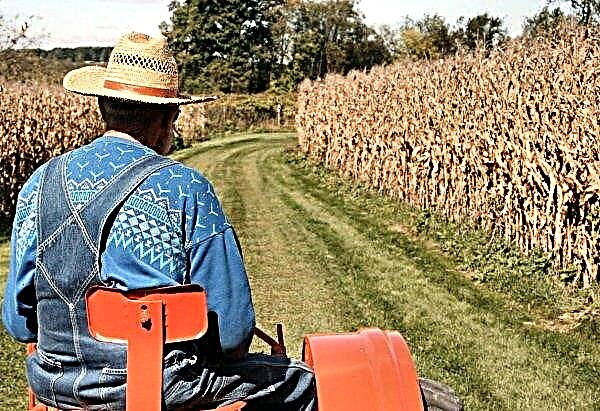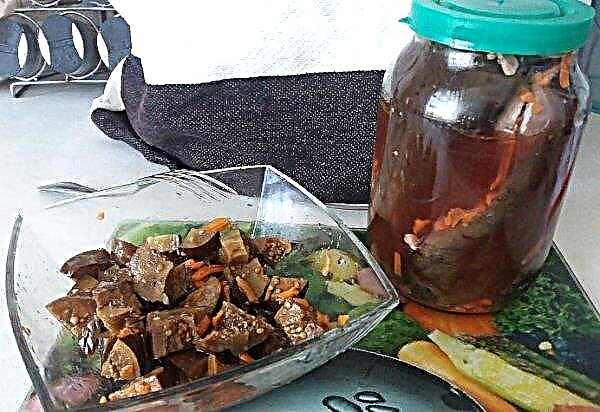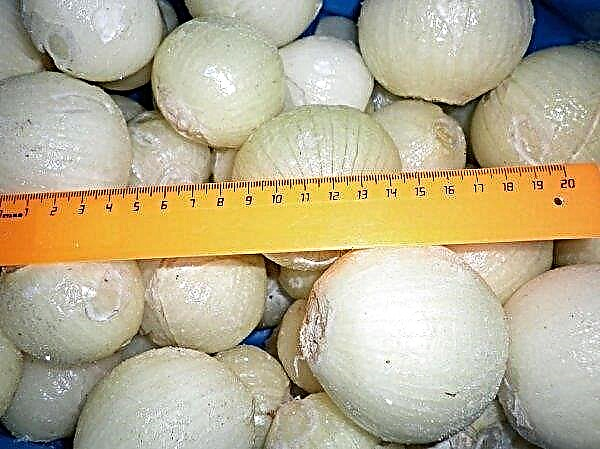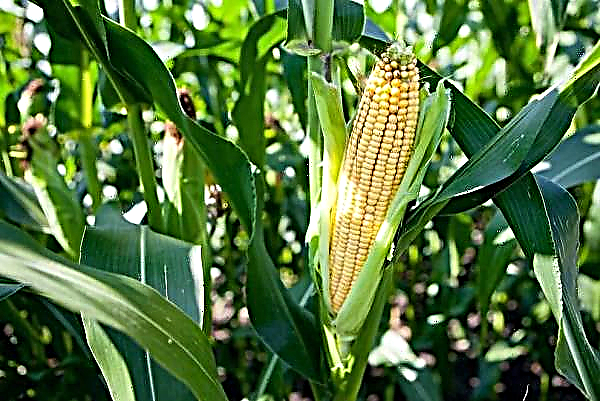The tempting aroma and pleasant taste of berries, which are also dietary, is what everyone loves cherries for. Due to the presence of medium-late varieties of culture, for example, Full house, it is now possible to enjoy berries even in the middle of summer. This article discusses the biological qualities of the variety, the rules for planting and caring for cherries, and the prevention and treatment of diseases.
Selection history
Even 50-60 years ago, cherries were considered exclusively southern stone fruit, but due to improved climatic conditions, as well as significant targeted work of breeders, the region of its cultivation spread to the north. Now, residents of the middle zone of the Russian Federation, Belarus, as well as the Baltic countries can also harvest cherry crops from their garden. In Ukraine, this fruit culture deservedly bears the title of one of the most delicious and sought after.
And growing medium-late and late varieties of cherries provides an opportunity to enjoy the taste of berries for quite a long time. Traditionally, the most delicious cherry is considered to be the crop from Melitopol. A variety of cherries Full house was bred at the Institute of Irrigated Horticulture (now the Melitopol Experimental Station) named after M.F. Sidorenko of the NAAS.
This authority specializes in breeding and technologies for growing fruit crops in the conditions of the Southern Steppe of Ukraine. In 2007, academicians M. Turovtsev and V. O. Turovtsev tried to cross the Prestigious and Tseshen October cherries. The result is a very tasty and fairly high-quality grade Full House. It was included in the State Register of plants suitable for distribution in Ukraine in the same 2007.
Biological features and characteristics
The following paragraphs of the article describe the general potential of the variety according to its fruit-forming qualities, characteristics of the tree and the berries themselves.
Tree description
The Full House tree has medium growth strength and low height. It is also characterized by moderate spreading, has a crown that is half raised and dense in density. The number of lentils on the annual shoot is average; the vegetative buds are separate from the shoots.
Important! Cherry berries are incredibly useful: they include nicotinic acid, vitamin C, carotene, and other useful elements. Eating cherries helps strengthen blood vessels and improve blood composition, lowering blood pressure and cholesterol, as well as cleansing the body of toxins.
Leaf blades are oblong and narrow in width. A more intense green color is visible at the top of the leaves. Leaf petioles oblong with dark red veins. Medium-sized flowers have rounded petals that tightly touch each other.
Fruit Description
The fruiting of this culture occurs on bouquet branches of annual shoots. Sweet cherries are one-dimensionally large (average weight - 9–11 g, maximum weight –– 12–15 g), have a flat heart-shaped shape. The tail of the fetus is of medium thickness and length with the presence of a separating layer. The peel of the fruit is dark red with a light ruby hue, the stone is small oval. The pulp is compacted, crunchy, also dark red in color, with an average level of juice content (the color of the juice is bright purple). The taste of cherries is sweet with a slight sourness. Tasting grade evaluation - 4.8 points.
The peel of the fruit is dark red with a light ruby hue, the stone is small oval. The pulp is compacted, crunchy, also dark red in color, with an average level of juice content (the color of the juice is bright purple). The taste of cherries is sweet with a slight sourness. Tasting grade evaluation - 4.8 points.
Pollinators
The sweet cherry variety Full house is self-fertile, that is, it does not bear fruit without the help of pollen from neighboring trees and bees. The best pollinators are the varieties of cherries Krupnoplodnaya and Melitopol black.
Did you know? Bees can collect up to 35 kg of pollen from 1 ha of sweet cherry trees.
Ripening period
Depending on the variety, cherries ripen from late May to August. Since the Full House is characterized by a medium-late ripening period (Bigarro variety, while the early varieties are generally called Gini), he sings in the second half of July - somewhere in the 20-30th days of the month. 
Productivity
The full house is characterized by early maturity - it enters the fruiting period in the 4th year after planting. The yield level is high: from 1 ha you can collect up to 126 kg, from 1 tree - about 48 kg.
Winter hardiness and drought tolerance
The resistance level of the variety to cold winter conditions is high. It tolerates even prolonged periods of dry weather.
Rules for planting cherry seedlings
This variety is recommended for cultivation in the steppe and forest-steppe zones. The following information describes in more detail the rules for planting full house cherries.
Optimal timing
Planting cherries, even winter-hardy, is recommended at a positive temperature in early spring before swelling of the kidneys. Autumn planting can provoke freezing and death of a seedling.
Seat selection
Sweet cherry is a tree that loves warmth and sunshine. Therefore, as a place for planting stone fruit, it is necessary to choose a well-lit shadowless area. Disastrous for the tree will be the influence of cold winds from the north.
Did you know? “Dukes” are the so-called crossed cherries and cherries. For the first time such a hybrid was bred in the 17th century in Europe and it was then that it was given the name "duke", which means «duke».
In the soil when growing crops in no case should stagnation of moisture occur. The soil should be loose, not clay and pass water well. If your site still has more clay soil, mix it with sand.
Process and scheme
The dimensions of the pit, which should be prepared in the fall, are as follows: depth - 70 cm, diameter - 1 m.
Next, you must perform the following steps:
- Pour 3 buckets of humus into the soil or pour 1 liter of wood ash. To reduce soil acidity, it is recommended to add limestone gravel (2-3 buckets).
- Soaked in water for 8 hours, the roots of the seedling must be placed in the hole, not reaching the bottom by 4-5 cm. Gently fill the roots with earth, make a ditch around the hole, and pour plenty of water.
- The distance between several cherry seedlings should be at least 4-5 m.

Variety Care Features
The level of its development and productivity, as well as the further taste of the berries, depend on proper care for the cherries.
Fertilizer application
Every year, cherries need nitrogen top dressing: for this, every spring, nitrogen fertilizers must be applied at a rate of 20 g per 1 m². In addition, the first 3 years in the spring-summer season (from May to June) it is necessary to add urea to the soil with the calculation of 30 g of dry matter per 1 bucket of water. It is better to do this three times during the period with mandatory loosening of the borehole soil.
Watering and loosening
Watering the tree around the roots after loosening the soil. Before the appearance of flowers - 2 buckets per year, but not at a time, but gradually, as the earth becomes dry. In summer - frequent watering, because hot and dry weather badly affects the soil condition - 2–5 buckets per year. It is imperative to water the cherry before the onset of the winter season, or in the spring before it blooms, along with the addition of fertilizers.
In summer - frequent watering, because hot and dry weather badly affects the soil condition - 2–5 buckets per year. It is imperative to water the cherry before the onset of the winter season, or in the spring before it blooms, along with the addition of fertilizers.
Cold protection
To protect the tree, it is necessary to drive several pegs around the trunk, and then make an artificial shelter by wrapping the frame with burlap, spunbond, agrofibre.
Cropping and shaping the crown
The optimum cutting angle of the cherry branches is 40–45 °. The formation of the crown must be carried out in the first year after planting. After trimming, it is recommended to cover the cut points with garden varieties in order to quickly heal the wounds of the plant.
Diseases and Pests
The general resistance to moniliosis, or monilial burn, as well as coccomycosis in the variety is high. A slight defeat is possible in very prolonged rainy periods. In order to prevent moniliosis, cherries must be systematically treated with such preparations containing copper as Mikosan-B, Horus, and others.
It is important to carefully ensure that mold does not form on the foliage, otherwise, completely cut and burn infected leaves. If the disease still hit the variety, it is necessary to treat the branches and leaves with fungicides: Bordeaux liquid, vitriol, Rovral, Teldor and others.
How to prevent and overcome the defeat of the tree with coccomycosis can be done in the following way:
- digging the soil in the spring;
- timely whitewashing;
- wood treatment with fungicides "Abiga-Peak", "Chorus", "Topsin M", copper sulfate and Bordeaux liquid;
- inspection of the plant for the presence of fungus;
- removal and burning of all damaged parts of a tree.
 Moniliosis of cherries
Moniliosis of cherriesHarvesting and storage
The berries are plucked with the stalk, or leaving 2/3 of the tails and stacked in small plastic boxes. It is recommended to store in a cellar, basement or refrigerator. The Full House variety is highly transportable, so it is well suited for sales. You can store it in fresh and frozen form (seedless, mashed, with sugar, in syrup). It is recommended to eat fresh, but you can cook compotes, casseroles, preserves and other similar dishes.
Important! CherYeshn is not recommended for diabetics because of the high sugar level in the berries. Because of this, the fruits are also considered allergenic products, however, yellow-pink and yellow cherries are less dangerous for allergy sufferers.
In general, the Full House variety is one of the best medium-late cherries with a high yield and taste, which you will definitely get with proper plant care.


